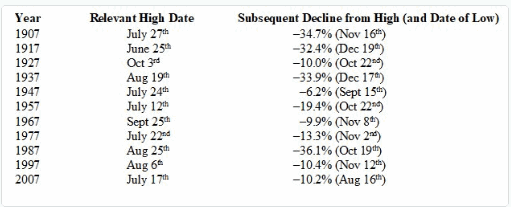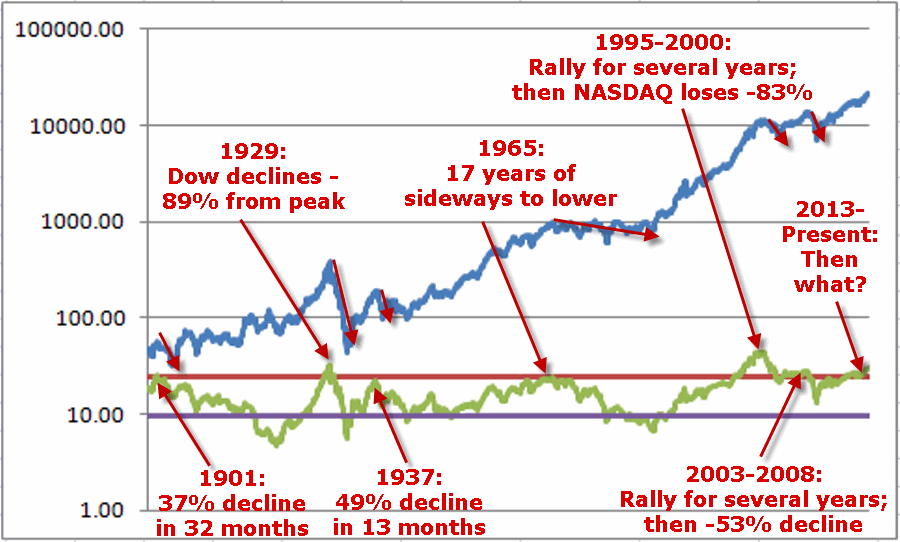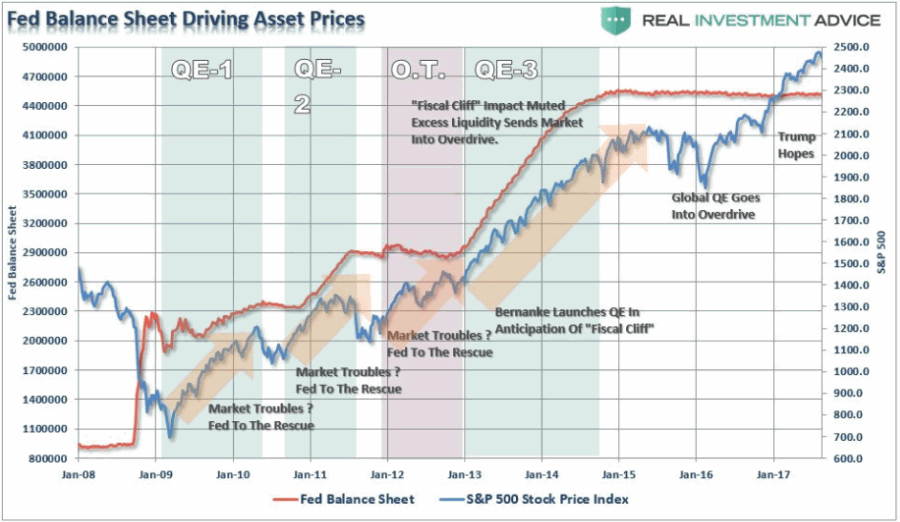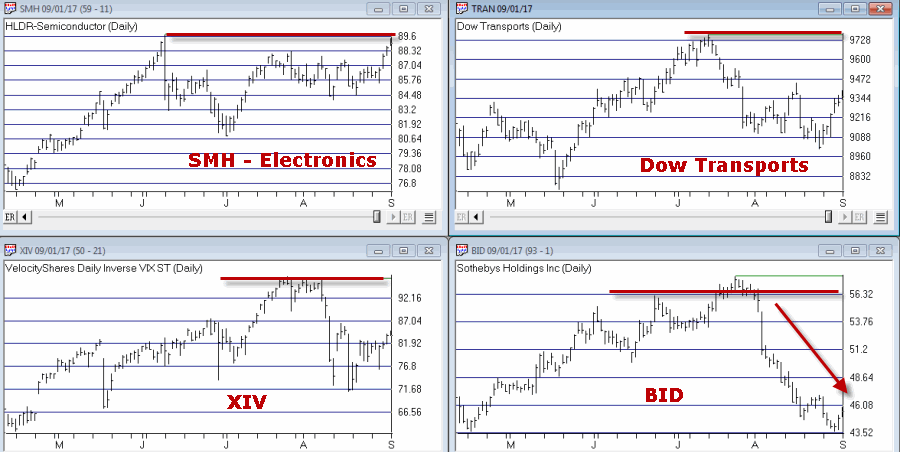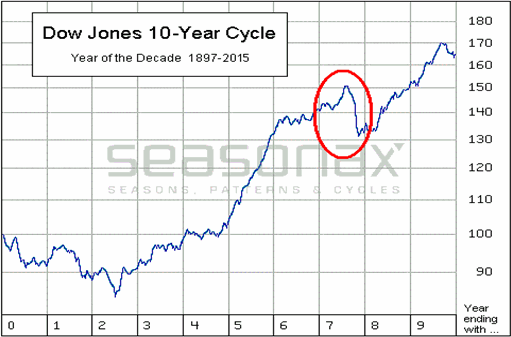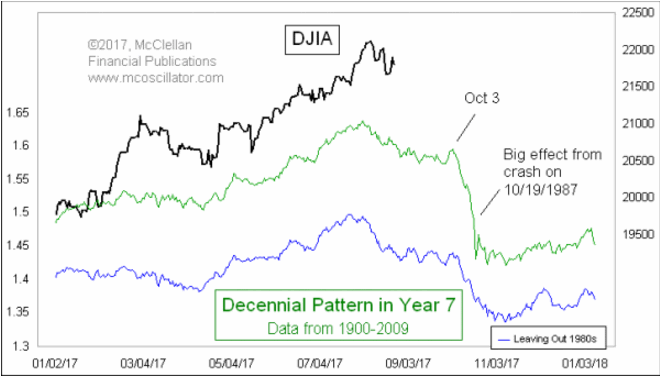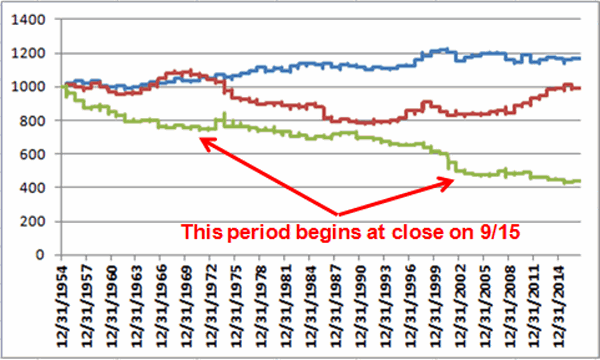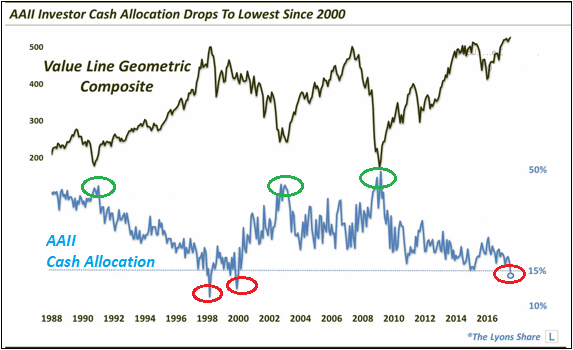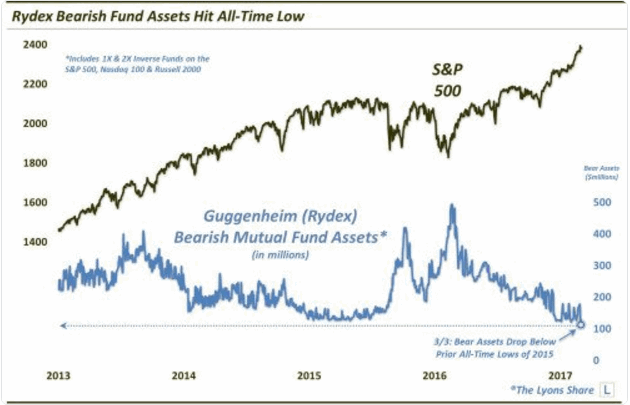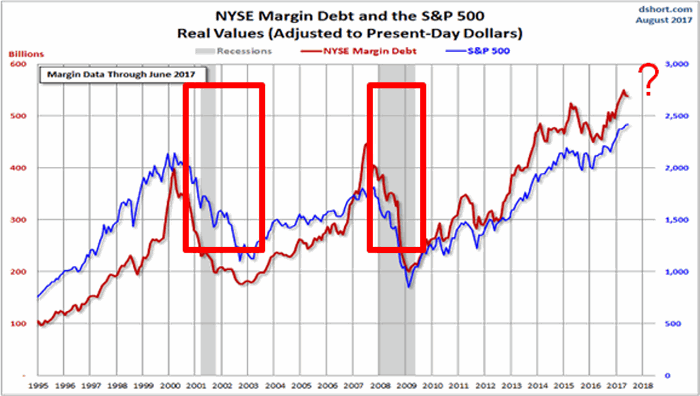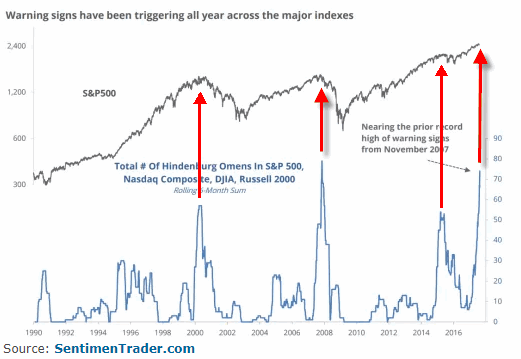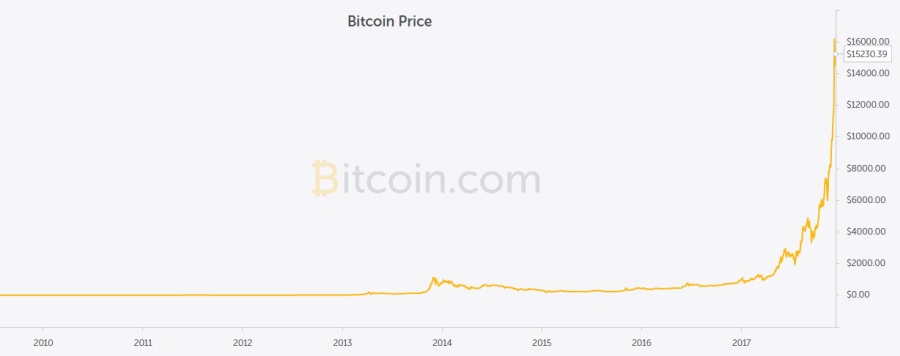The post Four Things to Watch for Warning Signs appeared first on AIQ TradingExpert Pro.
Four Things to Watch for Warning Signs
It’s Soon or Never for Bonds
Up2 if val([close],1) > val([close],2).
Up3 if val([close],2) > val([close],3).
Up4 if val([close],3) > val([close],4).
Up5 if val([close],4) > val([close],5).
Up6 if val([close],5) > val([close],6).
Up7 if val([close],6) > val([close],7).
Up8 if val([close],7) > val([close],8).
Up9 if val([close],8) > val([close],9).
Up10 if val([close],9) > val([close],10).
Up11 if val([close],10) > val([close],11).
Up12 if val([close],11) > val([close],12).
Up13 if val([close],12) > val([close],13).
Up14 if val([close],13) > val([close],14).
Up15 if val([close],14) > val([close],15).
Up16 if val([close],15) > val([close],16).
Up17 if val([close],16) > val([close],17).
Up18 if val([close],17) > val([close],18).
Up19 if val([close],18) > val([close],19).
Up20 if val([close],19) > val([close],20).
The post It’s Soon or Never for Bonds appeared first on AIQ TradingExpert Pro.
Detecting Swings
The AIQ code based on Domenico D’Errico’s article in the May 2017 issue of Stoks Commodities, “Detecting Swings,” is provided below.
I tested the author’s four systems using the NASDAQ 100 list of stocks on weekly bars, as did the author, from 3/16/2005 through 3/14/2017. Figure 7 shows the comparative metrics of the four systems using the four-week exit. The results were quite different than the author’s, probably due to a different test portfolio and also a 10-year test period rather than the author’s 20-year period. In addition, my test results show longs only, whereas the author’s results are the average of both the longs and shorts.

The Bollinger Band (Buy2) system showed the worst results, whereas the author’s results showed the Bollinger Band system as the best. The pivot system (Buy1) showed the best results, whereas the author’s results showed the pivot system as the worst. I am not showing here the comparative test results for the Sell1 thru Sell4 rules, as all showed an average loss over this test period.
!DECTECTING SWINGS
!Author: Domenico D'Errico, TASC May 2017
!Coded by: Richard Denning, 3/15/17
!www.TradersEdgeSystems.com
!Set to WEEKLY in properties
Low is [low].
Low1 is valresult(Low,1).
Low2 is valresult(Low,2).
High is [high].
High1 is valresult(High,1).
High2 is valresult(High,2).
PivotLow if Low1 < Low2 and Low1 < Low.
PivotHigh if High1 > High2 and High1 > High.
Buy1 if PivotLow.
Sell1 if PivotHigh.
!Set parameter for bollinger bands to 12 with 2 sigma (weekly) in charts:
Buy2 if [close] > [Lower BB] and valrule([close] <= [Lower BB],1).
Sell2 if [close] < [Upper BB] and valrule([close] >= [Upper BB],1).
!Set parameter for Wilder RSI to 5 (weekly) in charts:
Buy3 if [RSI Wilder] > 40 and valrule([RSI Wilder] <= 40,1).
Sell3 if [RSI Wilder] < 60 and valrule([RSI Wilder] >= 60,1).
Buy4 if [RSI Wilder] < 40 And Low > Low1.
Sell4 if [RSI Wilder] > 60 And High < High1.
Exit if {position days} >= 4.
The post Detecting Swings appeared first on AIQ TradingExpert Pro.
This is What a Lack of Fear Looks Like (I Think)
The post This is What a Lack of Fear Looks Like (I Think) appeared first on AIQ TradingExpert Pro.
One Good Reason NOT to Pick a Bottom in DIS
 Figure 1 – Is latest dip in DIS a buying opportunity? Maybe, but history suggests we look elsewhere….(Courtesy AIQ TradingExpert)
Figure 1 – Is latest dip in DIS a buying opportunity? Maybe, but history suggests we look elsewhere….(Courtesy AIQ TradingExpert)| Year | Favorable | Unfavorable | Buy/Hold |
| 1972 | 78.1 | (3.5) | 71.9 |
| 1973 | (53.5) | (12.0) | (59.1) |
| 1974 | 4.4 | (56.4) | (54.4) |
| 1975 | 175.6 | (12.4) | 141.5 |
| 1976 | 5.2 | (6.9) | (2.0) |
| 1977 | (28.2) | 19.1 | (14.4) |
| 1978 | 4.6 | (3.3) | 1.2 |
| 1979 | 1.2 | 10.5 | 11.9 |
| 1980 | 20.8 | (5.8) | 13.8 |
| 1981 | 42.8 | (28.7) | 1.9 |
| 1982 | 16.0 | 4.4 | 21.1 |
| 1983 | (5.7) | (11.6) | (16.7) |
| 1984 | 25.6 | (9.6) | 13.6 |
| 1985 | 94.4 | (3.3) | 88.0 |
| 1986 | 98.3 | (23.0) | 52.8 |
| 1987 | 14.6 | 20.1 | 37.6 |
| 1988 | 4.2 | 6.5 | 10.9 |
| 1989 | 32.7 | 28.3 | 70.3 |
| 1990 | 28.4 | (29.4) | (9.3) |
| 1991 | 14.4 | (1.5) | 12.8 |
| 1992 | 51.3 | (0.7) | 50.2 |
| 1993 | 16.0 | (14.5) | (0.8) |
| 1994 | 23.2 | (12.4) | 7.9 |
| 1995 | 27.7 | 0.3 | 28.0 |
| 1996 | 18.4 | 0.0 | 18.4 |
| 1997 | 43.3 | (0.9) | 41.9 |
| 1998 | 36.9 | (33.6) | (9.1) |
| 1999 | 15.8 | (15.8) | (2.5) |
| 2000 | 4.0 | (4.8) | (1.1) |
| 2001 | 23.6 | (42.1) | (28.4) |
| 2002 | 12.6 | (30.1) | (21.3) |
| 2003 | 50.9 | (5.2) | 43.0 |
| 2004 | 28.9 | (7.6) | 19.2 |
| 2005 | (2.5) | (11.6) | (13.8) |
| 2006 | 41.8 | 0.8 | 43.0 |
| 2007 | (6.2) | 0.4 | (5.8) |
| 2008 | (24.4) | (7.0) | (29.7) |
| 2009 | 29.1 | 10.1 | 42.1 |
| 2010 | 16.1 | 0.2 | 16.3 |
| 2011 | 30.4 | (23.4) | (0.0) |
| 2012 | 15.9 | 14.6 | 32.8 |
| 2013 | 54.3 | (0.6) | 53.4 |
| 2014 | 17.2 | 5.2 | 23.3 |
| 2015 | 20.4 | (7.3) | 11.6 |
| 2016 | 5.0 | (5.6) | (0.8) |
| 2017 | ? | ? | ? |
| # Years UP | 39 | 13 | 28 |
| # Years DOWN | 6 | 32 | 17 |
| Average % +/- | 25.0 | (6.9) | 15.8 |
The post One Good Reason NOT to Pick a Bottom in DIS appeared first on AIQ TradingExpert Pro.
Summer Fun with Biotech and Real Estate
 Figure 1 – Biotech and Real Estate (Courtesy AIQ TradingExpert)
Figure 1 – Biotech and Real Estate (Courtesy AIQ TradingExpert) Figure 2 – Growth of $1,000 split between FBIOX and FRESX during seasonally favorable summer period (1989-2016)
Figure 2 – Growth of $1,000 split between FBIOX and FRESX during seasonally favorable summer period (1989-2016)| Measure | Result |
| # Years UP | 22 (79%) |
| # Years DOWN | 6 (21%) |
| Average All Years | +3.3% |
| Average UP Year | +5.0% |
| Average DOWN Year | (-2.9%) |
| Best UP Year | +14.9% (2009) |
| Worst DOWN Year | (-4.3%) (2004) |
| Year | FBIOX/FRESX | DJIA | Diff |
| 1989 | 4.8 | 5.1 | (0.3) |
| 1990 | 2.8 | 2.1 | 0.7 |
| 1991 | 5.8 | 3.6 | 2.2 |
| 1992 | 7.0 | 3.2 | 3.7 |
| 1993 | 0.8 | 2.1 | (1.3) |
| 1994 | (0.6) | 1.8 | (2.4) |
| 1995 | 3.5 | 2.7 | 0.8 |
| 1996 | (4.1) | (4.1) | 0.1 |
| 1997 | 2.9 | 6.4 | (3.5) |
| 1998 | 1.8 | 2.2 | (0.5) |
| 1999 | 4.4 | (0.1) | 4.5 |
| 2000 | 0.3 | 1.1 | (0.8) |
| 2001 | (3.6) | 0.1 | (3.8) |
| 2002 | (1.5) | (4.9) | 3.4 |
| 2003 | 8.0 | 1.0 | 7.0 |
| 2004 | (4.3) | (2.9) | (1.4) |
| 2005 | 9.6 | 2.1 | 7.5 |
| 2006 | 4.0 | 1.8 | 2.2 |
| 2007 | (3.2) | (1.0) | (2.1) |
| 2008 | 6.7 | (1.9) | 8.6 |
| 2009 | 14.9 | 10.0 | 4.9 |
| 2010 | 2.0 | 1.6 | 0.4 |
| 2011 | 3.0 | 0.8 | 2.2 |
| 2012 | 5.7 | 4.0 | 1.7 |
| 2013 | 12.6 | 5.2 | 7.5 |
| 2014 | 1.1 | 0.4 | 0.7 |
| 2015 | 0.6 | (2.2) | 2.8 |
| 2016 | 8.6 | 2.3 | 6.2 |
The post Summer Fun with Biotech and Real Estate appeared first on AIQ TradingExpert Pro.
A Focus on the Trends in Stocks, Bonds and Gold
 Figure 2 – Four Major Market Averages (Courtesy AIQ TradingExpert)
Figure 2 – Four Major Market Averages (Courtesy AIQ TradingExpert)
The post A Focus on the Trends in Stocks, Bonds and Gold appeared first on AIQ TradingExpert Pro.
Respect the Trend, But Beware

The post Respect the Trend, But Beware appeared first on AIQ TradingExpert Pro.
Detecting Swings
The AIQ code based on Domenico D’Errico’s article in the May 2017 issue of Stocks & Commodities issue, “Detecting Swings,” is provided here.
I tested the author’s four systems using the NASDAQ 100 list of stocks on weekly bars, as did the author, from 3/16/2005 through 3/14/2017. Figure 7 shows the comparative metrics of the four systems using the four-week exit. The results were quite different than the author’s, probably due to a different test portfolio and also a 10-year test period rather than the author’s 20-year period. In addition, my test results show longs only, whereas the author’s results are the average of both the longs and shorts.

FIGURE 7: AIQ. As coded in EDS, this shows the metrics for the author’s four systems run on NASDAQ 100 stocks (weekly bar data) over the period 3/16/2005 to 3/14/2007.
The Bollinger Band (Buy2) system showed the worst results, whereas the author’s results showed the Bollinger Band system as the best. The pivot system (Buy1) showed the best results, whereas the author’s results showed the pivot system as the worst. I am not showing here the comparative test results for the Sell1 thru Sell4 rules, as all showed an average loss over this test period.
!DECTECTING SWINGS
!Author: Domenico D'Errico, TASC May 2017
!Coded by: Richard Denning, 3/15/17
!www.TradersEdgeSystems.com
!Set to WEEKLY in properties
Low is [low].
Low1 is valresult(Low,1).
Low2 is valresult(Low,2).
High is [high].
High1 is valresult(High,1).
High2 is valresult(High,2).
PivotLow if Low1 < Low2 and Low1 < Low.
PivotHigh if High1 > High2 and High1 > High.
Buy1 if PivotLow.
Sell1 if PivotHigh.
!Set parameter for bollinger bands to 12 with 2 sigma (weekly) in charts:
Buy2 if [close] > [Lower BB] and valrule([close] <= [Lower BB],1).
Sell2 if [close] < [Upper BB] and valrule([close] >= [Upper BB],1).
!Set parameter for Wilder RSI to 5 (weekly) in charts:
Buy3 if [RSI Wilder] > 40 and valrule([RSI Wilder] <= 40,1).
Sell3 if [RSI Wilder] < 60 and valrule([RSI Wilder] >= 60,1).
Buy4 if [RSI Wilder] < 40 And Low > Low1.
Sell4 if [RSI Wilder] > 60 And High < High1.
Exit if {position days} >= 4.
The code and EDS file can be downloaded from http://aiqsystems.com/detectingswings.EDS
The post Detecting Swings appeared first on AIQ TradingExpert Pro.
One More Cry of ‘Wolf’
The post One More Cry of ‘Wolf’ appeared first on AIQ TradingExpert Pro.
The Gathering Storm
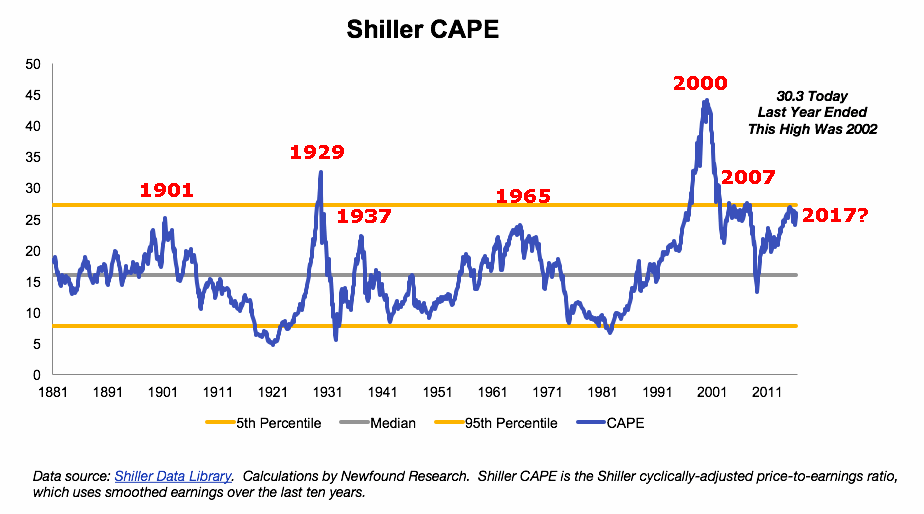 Figure 4 – Schiller Adjusted PE (Courtesy: Schiller Data Library)
Figure 4 – Schiller Adjusted PE (Courtesy: Schiller Data Library)
The post The Gathering Storm appeared first on AIQ TradingExpert Pro.
A Simple Indicator for Traders
First the Bad News: There are no “magic bullets” when it comes to trading. There are people in this industry who have literally tested somewhere in the range of six bazillion “indicators” – give or take (“Hi. My name is Jay”). Every trend following indicator looks like a gold mine when it latches onto a huge trend and rides it (but not so much when it starts getting whipsawed). And every overbought/oversold indicator looks like a gift from heaven from time to time when it somehow manages to peak (or valley) and then reverses right at a high (or low). And then the next time the thing gets oversold the security in question just keeps plunging and the previously “amazingly accurate” indicator just gets more and more oversold.
Bottom line: what I am about to discuss is likely no better or worse than a lot of other indicators. And it is no holy grail. Still, I kinda like it – or whatever that is worth.
EDITORS NOTE an AIQ EDS file for this indicator with the 3 step rules outlined can be downloaded from here you will need to copy or save this file into your wintes32/eds strategies folder. Alternatively the code is available at the end of this article for copying and pasting into a new EDS file.
UpDays20
I call this indicator UpDays20 and I stole, er, learned it originally from Tom McClellan of McLellan Financial Publications. My calculation may be slightly different because I wanted an indicator that can go both positive and negative. For a given security look at its trading gains and losses over the latest 20 trading days.
UPDays20 = (Total # of Up days over the last 20 trading days) – 10
So if 10 of the last 20 trading days showed a gain then UpDays20 would read exactly 0.
If only 6 of the last 20 trading days showed a gain then UpDays20 would read -4
You get the idea (and proving once again that it “doesn’t have to be rocket science”). As a “trading method” it is always advised that this indicator – like most all other indicators – NOT be used as a standalone approach to trading. That being said, the way I follow this indicator is as follows.
Step 1) UpDays20 drops to at least -2
Step 2) UpDays20 rises 2 points from a low
Step 3) The security in question then rises above its high for the previous 2 trading days
It is preferable to follow this setup hen the security in question is above its 200-day moving average, but that is up to the trader to decide (the danger to using this with a security below its 200-day moving average is that it might just be in the middle of a freefall. The upside is that counter trend rallies can be fast and furious – even if sometimes short-lived).
Again, there is nothing magic about these particular steps. They are simply designed to do the following:
1) Identify an oversold condition
2) Wait for some of the selling pressure to abate
3) Wait for the security to show some sign of reversing to the upside
Like just about every other indicator/method, sometimes it is uncannily accurate and sometimes it is embarrassingly wrong (hence the reason experienced traders understand that capital allocation and risk management are far more important than the actually method you use to enter trades).
In this previous article (in Figures 3 and 4) I wrote about using this indicator with ticker TLT. Figure 1 and 2 display the “buy” signals generated using the rules above for tickers IYT and GLD.
 Figure 1 – UpDays20 “Buy” Alerts for ticker IYT (Courtesy AIQ TradingExpert)
Figure 1 – UpDays20 “Buy” Alerts for ticker IYT (Courtesy AIQ TradingExpert)
 Figure 2 – UpDays20 “Buy” Alerts for ticker GLD (Courtesy AIQ TradingExpert)
Figure 2 – UpDays20 “Buy” Alerts for ticker GLD (Courtesy AIQ TradingExpert)
Are these signals good or bad? That is in the eye of the beholder and not for me to say. One big unanswered question is “when do you exit”? That is beyond the scope of this “idea” article – however, “sell some at the first good profit and then use a trailing stop” looks like a decent approach to consider) but would have a profound effect on any actual trading results.
Some of the signals displayed in Figures 1 and 2 are obviously great, others are maybe not so hot. Interestingly, some of the signals in Figure 1 and 2 that don’t look to timely at first blush actually offered a profitable opportunity to a trader who was inclined to take a quick profit. Again, how you allocate capital and when you exit with a profit and when you exit with a loss would likely have as much impact on results as the raw “buy” signals themselves.
Summary
No one should go out and start trying to trade tomorrow based on UpDays20. No claim is being made that the steps detailed herein will result in profits nor even that this is a good way to trade.
But, hey, it’s one way.
Jay Kaeppel Chief Market Analyst at JayOnTheMarkets.com and AIQ TradingExpert Pro client.
Disclaimer: The data presented herein were obtained from various third-party sources. While I believe the data to be reliable, no representation is made as to, and no responsibility, warranty or liability is accepted for the accuracy or completeness of such information. The information, opinions and ideas expressed herein are for informational and educational purposes only and do not constitute and should not be construed as investment advice, an advertisement or offering of investment advisory services, or an offer to sell or a solicitation to buy any security.
EDITORS NOTE an AIQ EDS file for this indicator with the 3 step rules outlined can be downloaded from here you will need to copy or save this file into your wintes32/eds strategies folder. Alternatively the code is available at the end of this article for copying and pasting into a new EDS file.
! UpDays20 – I call this indicator UpDays20. For a given security look at its trading gains and losses over the latest 20 trading days.
! UPDays20 = (Total # of Up days over the last 20 trading days) – 10
! So if 10 of the last 20 trading days showed a gain then UpDays20 would read exactly 0.
! If only 6 of the last 20 trading days showed a gain then UpDays20 would read -4
Upday if [close]>val([close],1).
totalupdayslast20days is CountOf(upday,20).
updayindicator is totalupdayslast20days – 10.
! How to follow this indicator
! Step 1) UpDays20 drops to at least -2
! Step 2) UpDays20 rises 2 points from a low
! Step 3) The security in question then rises above its high for the previous 2 trading days
UpDays20rises2points if updayindicator>valresult(updayindicator,1) and valresult(updayindicator,1)>valresult(updayindicator,2).
updays20atminus2orlower if valresult(updayindicator,2)<=-2.
closesabovehighof2priordays if [close]>val([high],1) and [close]>val([high],2).
Upsignal if UpDays20rises2points and updays20atminus2orlower and closesabovehighof2priordays.
The post A Simple Indicator for Traders appeared first on AIQ TradingExpert Pro.
System Development Using Artificial Intelligence
Are humans or computers better at trading? This question has been around on many fronts since the era of punch cards, and as technology advances, you question whether machines have limits. It’s the same with trading, and here’s an algorithm that may shed some light on which performs better…
!ARTIFICAL INTELLIGENCE FOR SYSTEM DEVELOPMENT
!Authors: Domenico D'Errico & Giovanni Trombetta, TASC August 2017
!Coded by: Richard Denning, 6/08/2017
!www.TradersEdgeSystems.com
!INPUTS:
O is [open].
C is [close].
H is [high].
L is [low].
exitBars is 8.
exitBarsP is 6.
enterGap is -0.08.
!CODE:
AvgP is (O+C+H+L)/4.
MedP is (H+L)/2.
MedB is (O+C)/2.
AvgP1 is valresult(AvgP,1).
AvgP2 is valresult(AvgP,2).
AvgP3 is valresult(AvgP,3).
MedP1 is valresult(MedP,1).
MedP2 is valresult(MedP,2).
MedP3 is valresult(MedP,3).
MedP4 is valresult(MedP,4).
MedB1 is valresult(MedB,1).
MedB2 is valresult(MedB,2).
MedB3 is valresult(MedB,3).
MedB4 is valresult(MedB,4).
!ENTRY & EXIT RULESl
Gandalf if
(AvgP1exitBars-1)
or ({position days}>=exitBars-1)
or ({position days}>=exitBarsP-1 and (C-{position entry price}>0)).
EntryPr is min(val([low],1) + enterGap,[open]).
Buy if Gandalf and [low] <= EntryPr.

The post System Development Using Artificial Intelligence appeared first on AIQ TradingExpert Pro.
An Unusual 4 ETF Portfolio…That Seems to Work
 Figure 1 –The Four ETFs in The Four NonCorr Portfolio (Courtesy AIQ TradingExpert)
Figure 1 –The Four ETFs in The Four NonCorr Portfolio (Courtesy AIQ TradingExpert)| FXE | UUP | TLT | XIV | |
| FXE | (913) | 77 | (13) | |
| UUP | (913) | (117) | 43 | |
| TLT | 77 | (117) | (234) | |
| XIV | (13) | 43 | (234) |
 Figure 3 – Cumulative % gain/loss for The FourNonCorr Portfolio (blue) versus SPY (red); 12/31/2007-9/30/2017
Figure 3 – Cumulative % gain/loss for The FourNonCorr Portfolio (blue) versus SPY (red); 12/31/2007-9/30/2017| 4 NonCorr | SPY | Diff | |
| 2008 | (6.0) | (37.0) | 31.0 |
| 2009 | 26.1 | 26.4 | (0.3) |
| 2010 | 45.2 | 14.9 | 30.3 |
| 2011 | (1.3) | 2.1 | (3.4) |
| 2012 | 34.3 | 15.8 | 18.5 |
| 2013 | 19.3 | 32.2 | (12.9) |
| 2014 | 5.3 | 13.5 | (8.2) |
| 2015 | 0.6 | 1.3 | (0.8) |
| 2016 | 21.0 | 11.8 | 9.2 |
| 2017* | 24.4 | 14.1 | 10.2 |
| 4NonCorr | SPY | |
| Average 12mo % +/- | 17.8 | 11.2 |
| Median 12mo % +/- | 14.9 | 15.0 |
| Std. Deviation | 17.1 | 16.8 |
| Ave/Std. Dev. | 1.04 | 0.67 |
| Worst 12mo % | (11.9) | (43.2) |
| Max. Drawdown % | (17.8) | (48.4) |
The post An Unusual 4 ETF Portfolio…That Seems to Work appeared first on AIQ TradingExpert Pro.
Adding groups and sectors to your Group/Sector List
Adding groups and sectors to your Group/Sector List
If for some reason you want to add to the Group/Sector List delivered with the system, TradingExpert Pro provides the necessary functions.
The procedure for adding to your Group/Sector List is as follows:
1. Add any new stocks to the Master Ticker List
2. Add new group tickers to the Master Ticker List.
3. Add new sector tickers to the Master Ticker List.
4. Add new sectors to the Group/Sector List. Under each new sector, insert the groups that will make up that sector.
5. Add new groups to the Group/Sector List. Under each new group, insert the stocks that will make up that group.
6. Use the Compute Group/Sector Indices function to compute indices for the new groups and sectors.
7. Use the Set RS Symbols function to set relative strength relationships.
Can a ticker be entered in more than one group?
TradingExpert Pro allows you to enter a ticker in more than one group. For example, you may want to follow an index of locally-owned companies by placing them in a newly created group. One of those companies could be a computer software development company that you would want to include in an industry group of computer stocks. You can enter an equity into as many user created groups as you want, but it is important that you do not enter these user created groups into sectors. Only principal industry groups should be collected into a sector.
Adding a new sector to your Group/Sector List
Proceed as follows:
1. First, add a new sector ticker to your Master Ticker List. Click the Ticker command on the menu bar. Then click New to display the New Ticker dialog box.
2. Enter a ticker for the new sector, then be sure to enter the proper Type designation (sector).
3. Click OK, and the second dialog box for entering a new ticker appears.
4. Type in a name (Description) and the First Date of data. The remaining default settings on this second dialog box can remain the same.
5. Click OK, and the new sector ticker will be added to the Master Ticker List.
6. Insert the new sector ticker into your Group/Sector List by doing the following:
• Display the Group/Sector List in the left (List) window by choosing its name from the Selected List text box on the toolbar.
• Highlight the new sector in the Master Ticker List by clicking on its name with your mouse.
• Again using your mouse, click the name of the master sector in the List window.
• Select the Insert Ticker(s) command on the List sub-menu or click the Insert to list toolbar button.
7. Before inserting groups under the new sector, be sure to create any new group tickers and add them to the Master Ticker List.
8. Insert all of the groups that will make up the new sector by doing the following:
• Select in the Master Ticker List all of the groups you want to add by simply holding down the Ctrl key while clicking each group.
• Again using your mouse, click the new sector in the Group/Sector List under which you want to insert the groups.
• Select the Insert Ticker(s) command on the List sub-menu or click the Insert to list toolbar button.
Adding a new group to your Group/Sector List
Follow these steps:
1. First, add a new group ticker to the Master Ticker List. Click the Ticker command on the menu bar. Then click New to display the New Ticker dialog box.
2. Enter a ticker for the new group, then be sure to enter the proper Type designation (group).
3. Click OK, and the second dialog box for entering a new ticker appears.
4. Type in a name (Description) and the First Date of data. The remaining default settings on this second dialog box can remain the same.
5. Click OK, and the new group ticker will be added to the Master Ticker List.
6. Insert the new group ticker into your Group/Sector List by doing the following:
• Display the Group/Sector List in the left (List) window by choosing its name from the Selected List text box on the toolbar.
• Highlight the new group in the Master Ticker List by clicking on it with your mouse.
• Again using your mouse, click the sector in the List window under which you want to insert the new group. If the list is fully contracted, you may need to use the Expand Level command on the List sub-menu to display all of the sectors.
• Select the Insert Ticker(s) command on the List sub-menu or click the Insert to list toolbar button.
7. Before inserting stocks under the new group, be sure to add any new stocks to your Master Ticker List.
8. Insert stocks by doing the following:
• Select in the Master Ticker List all of the stocks you want to add by simply holding down the Ctrl key while clicking each stock.
• Again using your mouse, click the new group in the Group/Sector List under which you want to insert the stocks.
• Select the Insert Ticker(s) command on the List sub-menu or click the Insert to list toolbar button.
Computing indices for a new group or sector
Following your next data retrieval, the group and sector indices will be automatically computed. However, when you add a new group or sector to your Group/Sector List, and you want to see an analysis at once without waiting for your next data retrieval, you can use the Compute Group/Sector Indices function to create the index.
To use Compute Group/Sector Indices:
1. Click Utilities on the Data Manager menu bar to display the drop-down menu.
2. Select Compute Group/Sector Indices from this menu. The Compute Group/Sector Indices dialog box appears.
3. In the Source section, click the option button for Selected Group(s) Symbols, then select your new group or sector in the text box. Check to compute both Parent and Child symbols.
4. In the Range section, select the first option, Update from Last Date of Data.
5. Choose OK. The computation will begin.
6. After you have computed group/sector indices, you should execute the function Set RS Indicators.
Setting relative strength relationships
This function sets your relative strength indicators to conform with parent/child relationships. Then, when you are working in Charts, you can easily see the relative strength of the stock vs. its parent group, a group vs. its parent sector, or a sector vs. the master sector.
To set Relative Strength Indicators:
1. Click Utilities on the Data Manager menu bar to display the drop-down menu.
2. Select Set RS Symbols. Then select Set RS Tickers. The Set RS Tickers dialog box appears.
3. Click the name of your list in the Selected Lists text box.
4. Click the first option, Set Relative Strength Relationships (overwrite).
5. Choose the OK button.
Building a new Group/Sector List
If for some reason you would want to build a new Group/Sector List, first create a new list and master sector, then follow the procedure above for adding groups and sectors to the list.
The post Adding groups and sectors to your Group/Sector List appeared first on AIQ TradingExpert Pro.
A Bottom-Picking Portfolio
 Figure 1 – Ticker BAL (Courtesy AIQ TradingExpert)
Figure 1 – Ticker BAL (Courtesy AIQ TradingExpert) Figure 2 – Ticker GDX (Courtesy AIQ TradingExpert)
Figure 2 – Ticker GDX (Courtesy AIQ TradingExpert) Figure 3 – Ticker JO (Courtesy AIQ TradingExpert)
Figure 3 – Ticker JO (Courtesy AIQ TradingExpert) Figure 4 – Ticker SGG (Courtesy AIQ TradingExpert)
Figure 4 – Ticker SGG (Courtesy AIQ TradingExpert) Figure 5 – Ticker SWN (Courtesy AIQ TradingExpert)
Figure 5 – Ticker SWN (Courtesy AIQ TradingExpert) Figure 6 – Ticker UNG (Courtesy AIQ TradingExpert)
Figure 6 – Ticker UNG (Courtesy AIQ TradingExpert) Figure 7 – The “Lows” Group (Courtesy AIQ TradingExpert)
Figure 7 – The “Lows” Group (Courtesy AIQ TradingExpert)The post A Bottom-Picking Portfolio appeared first on AIQ TradingExpert Pro.
Bitcoin May Rise Another 20-fold, But First….
 Figure 2 – Dot.com bubble stocks that survived and thrived
Figure 2 – Dot.com bubble stocks that survived and thrived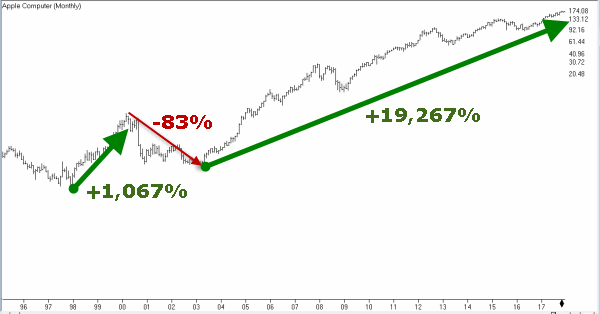 Figure 3 – Apple (Courtesy AIQ TradingExpert)
Figure 3 – Apple (Courtesy AIQ TradingExpert)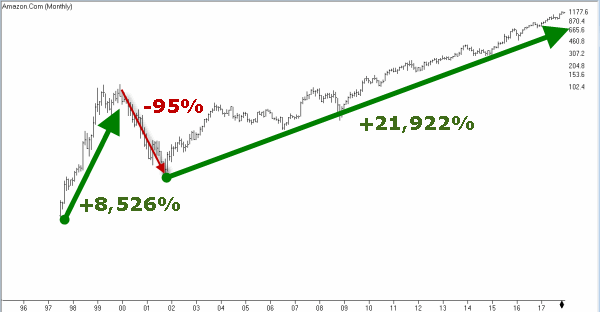 Figure 4 – Amazon (CourtesyAIQ TradingExpert)
Figure 4 – Amazon (CourtesyAIQ TradingExpert)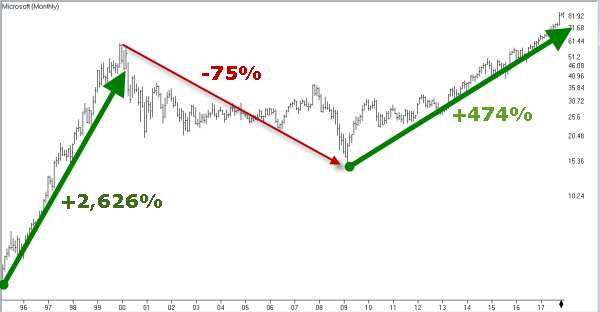 Figure 5 – Microsoft (Courtesy AIQ TradingExpert)
Figure 5 – Microsoft (Courtesy AIQ TradingExpert)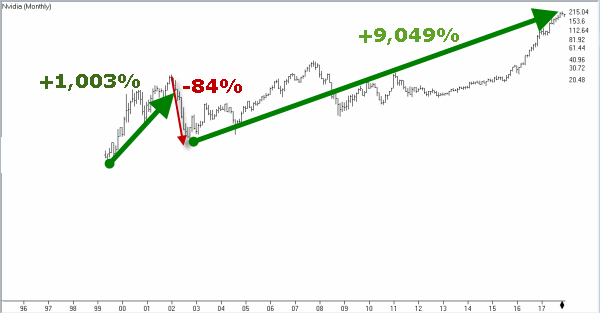 Figure 6 – Nvidia (Courtesy AIQ TradingExpert)
Figure 6 – Nvidia (Courtesy AIQ TradingExpert)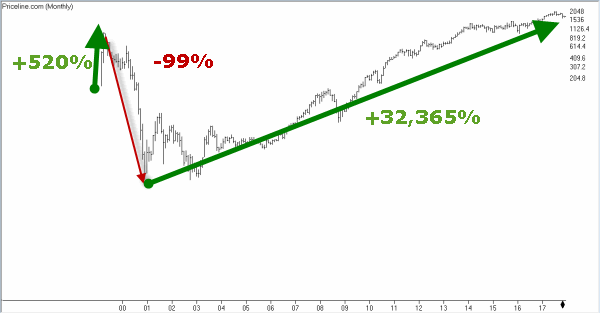 Figure 7 – Priceline (Courtesy AIQ TradingExpert)
Figure 7 – Priceline (Courtesy AIQ TradingExpert)The post Bitcoin May Rise Another 20-fold, But First…. appeared first on AIQ TradingExpert Pro.
A Candlestick Strategy With Soldiers And Crows
ndle reversal patterns—a bullish one white soldier and a bearish one black crow—that requ
The Expert Design Studio code for Jerry D’Ambrosio and Barbara Star’s article, “A Candlestick Strategy With Soldiers And Crows,” in Stocks & Commodities October 2018 issue is shown below.”Among the more well-known candlestick reversal patterns are soldiers and crows. These occur in a three-candle pattern such as three white soldiers or three black crows. Recently, on the website Candlesticker.com, we learned of two other candle reversal patterns—a bullish one white soldier and a bearish one black crow—that require fewer candles. ”
!A CANDLESTICK STRATEGY WITH SOLDIERS AND CROWS
!Author: Jerry D'Ambrosio & Barbara Star, TASC Oct 2017
!Coded by: Richard Denning 8/05/2017
!www.TradersEdgeSystems.com
!CODING ABBREVIATIONS:
O is [open].
O1 is valresult(O,1).
C is [close].
C1 is valresult(C,1).
C2 is valresult(C,2).
H is [high].
L is [low].
V is [volume].
!INPUTS:
minPriceBull is 1.
minPriceBear is 10.
minVolume is 1000. !in hundreds
volAvgLen is 50.
dayCount is 5.
longExitBars is 7.
shortExitBars is 1.
okToBuy if simpleavg(C,50) > simpleavg(C,200) or CminPriceBull and simpleavg(V,volAvgLen)>minVolume.
BullWS if C1C1 and C>O1 and O= longExitBars.
okToSell if simpleavg(C,50) < simpleavg(C,200) or C>simpleavg(C,200)*1.1.
okToSellMkt if TickerRule("SPX",okToSell).
PVfilterBear if C>minPriceBear and simpleavg(V,volAvgLen).
BearBC if C1>C2 and C1>O1
and OO1
and countof(C1>C2,dayCount)=dayCount
and PVfilterBear and okToSellMkt.
ExitShort if {position days} >= shortExitBars.
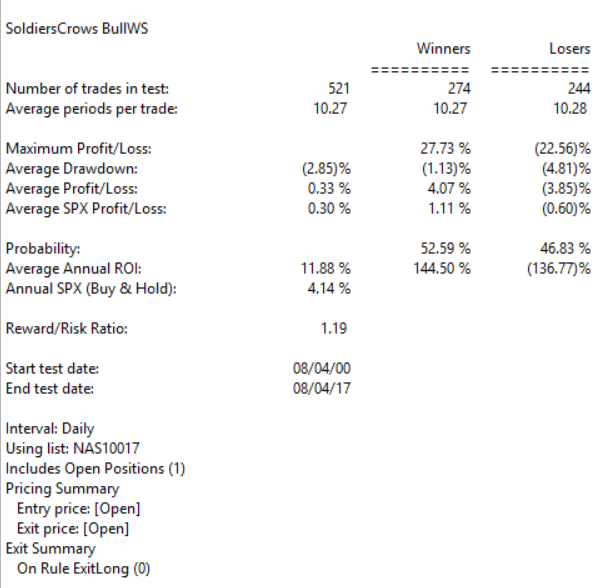
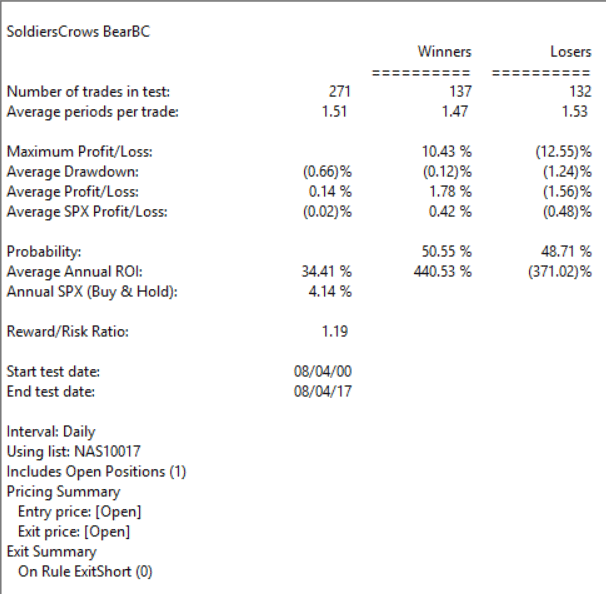
ire fewer candles. “
The post A Candlestick Strategy With Soldiers And Crows appeared first on AIQ TradingExpert Pro.
Weekly and Daily MACD

!WEEKLY & DAILY MACD !Author: Vitali Apirine, TASC Dec 2017 !Coded by: Richard Denning 10/13/17 !www.TradersEdgeSystems.com !INPUTS: S is 12. L is 25. EMA1 is expavg([Close],S). EMA2 is expavg([Close],L). EMA3 is expavg([Close],S*5). EMA4 is expavg([Close],L*5). MACD is EMA1 - EMA2. MACDW is EMA3 - EMA4. rdMACD is MACD + MACDW.
The post Weekly and Daily MACD appeared first on AIQ TradingExpert Pro.
The Biotech-Gold Stock Connection
 Figure 1 – Jay’s BioGold Index (Courtesy AIQ TradingExpert)
Figure 1 – Jay’s BioGold Index (Courtesy AIQ TradingExpert) Figure 2 – The BioGold Index with RSI32 (drop to 33 or below = BUY) (Courtesy AIQ TradingExpert)
Figure 2 – The BioGold Index with RSI32 (drop to 33 or below = BUY) (Courtesy AIQ TradingExpert)| Buy Signal | Sell Signal | FBIOX+FSAGX % +(-) |
| 4/30/1992 | 12/31/1992 | +14.4% |
| 2/26/1993 | 4/30/1993 | +14.7% |
| 4/29/1994 | 9/30/1994 | +7.2% |
| 12/30/1994 | 4/28/1995 | +9.8% |
| 4/30/1997 | 9/30/1997 | +18.4% |
| 11/28/1997 | 4/30/1998 | +10.4% |
| 6/30/1998 | 12/31/1998 | +16.1% |
| 3/30/2001 | 6/29/2001 | +22.7% |
| 7/31/2002 | 12/31/2002 | +18.1% |
| 7/30/2004 | 10/29/2004 | +11.2% |
| 3/31/2005 | 7/29/2005 | +10.2% |
| 4/30/2008 | 7/31/2008 | +9.4% |
| 9/30/2008 | 6/30/2009 | +3.8% |
| 5/31/2012 | 9/28/2012 | +20.0% |
| 2/28/2013 | 2/28/2014 | +28.6% |
| 8/31/2015 | 4/29/2016 | +22.2% |
| 12/30/2016 | 2/28/2017 | +13.2% |
| Average % | +14.7% | |
| Median % | +14.4% | |
| Std. Deviation % | 6.4% | |
| Max % +(-) | +28.6% | |
| Min % +(-) | +3.8% |
The post The Biotech-Gold Stock Connection appeared first on AIQ TradingExpert Pro.




















